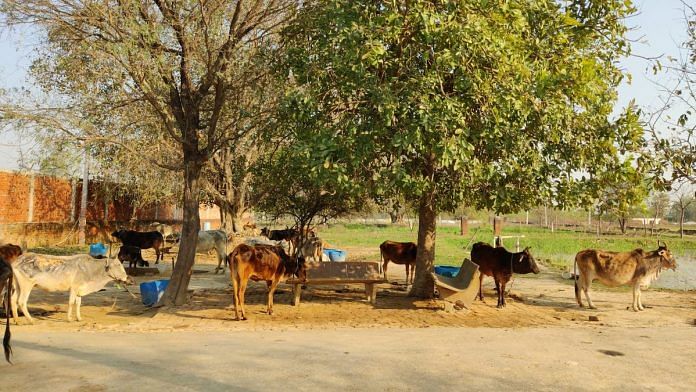Hurrr hurrr….’ It’s 2 am and 70-year-old Chameli Devi is sitting on a machan in the middle of her field making these sounds. Not to scare off criminals, but stray cattle.
Chameli Devi from Banehta village in Uttar Pradesh’s Sitapur lost her entire wheat harvest on her two-bigha land last year. ‘Anna pashu’ or ‘chutta pashu’ (stray cattle), as it’s called in UP, ate all her crop in the night. She somehow survived the year with the help of NGOs, but she doesn’t want to take any risk this time. Chameli Devi needs the crops more than ever after the two waves of Covid.
“Sarkaar toh gaiyya ko bhagwaan banaake sadak par chhorh di hai kisano ka nuksaan karne ke liye, bhagwaan hain toh sarkar kamsekam unhke khaane ka toh bandobast karde (The government has given cows holy status and left them on the roads to hurt farmers. If they are god, at least feed them),” she says as she shivers and struggles to stay alert in the winter night.
How the word ‘menace’ got attached to the holy cow in Uttar Pradesh, the ground zero of the hot-button cow protection politics, is a curious tale of corruption, poverty and the Bharatiya Janata Party (BJP)’s inability to consider policy fallouts. Cow worship and protection has been a centrepiece of the Yogi Adityanath government since 2017.
But now, the ballooning problem of ‘cattle menace’ is becoming so unmanageable that politicians can no longer ignore the issue in the ongoing Uttar Pradesh elections. Desperate farmers let loose dozens of cows at the open ground venue of UP Chief Minister Yogi Adityanath’s election rally in Barabanki on Tuesday. On Sunday, PM Narendra Modi gave the assurance in his Unnao public rally that after 10 March (election result day), a new policy would be introduced to deal with the issue, which would include making the dung (gobar) of stray cows lucrative for the farmers.
“For the last three-four years, hungry cows and bulls have become a big menace for farmers. If the government can come down so heavily on cow slaughter, then they should also make arrangements for their fodder. Lakhs of gaushalas have opened after Yogi ji came to power but due to hunger and starvation, the cows and bulls run away from them and come to the fields to eat,” says Chameli Devi. She tends to her fields alone after her husband died and her son moved to the city. “Before this government came, I don’t know if cows were getting sold or being slaughtered, but at least they were not dying of hunger or creating issues for poor farmers.”
Many women now have to sit in the fields all night long to guard crops. Even if they feel unsafe, there isn’t any other option. “We sow crops all year, if during harvest the cattle eat it or trample upon it, it would kill us,” Chameli Devi adds.
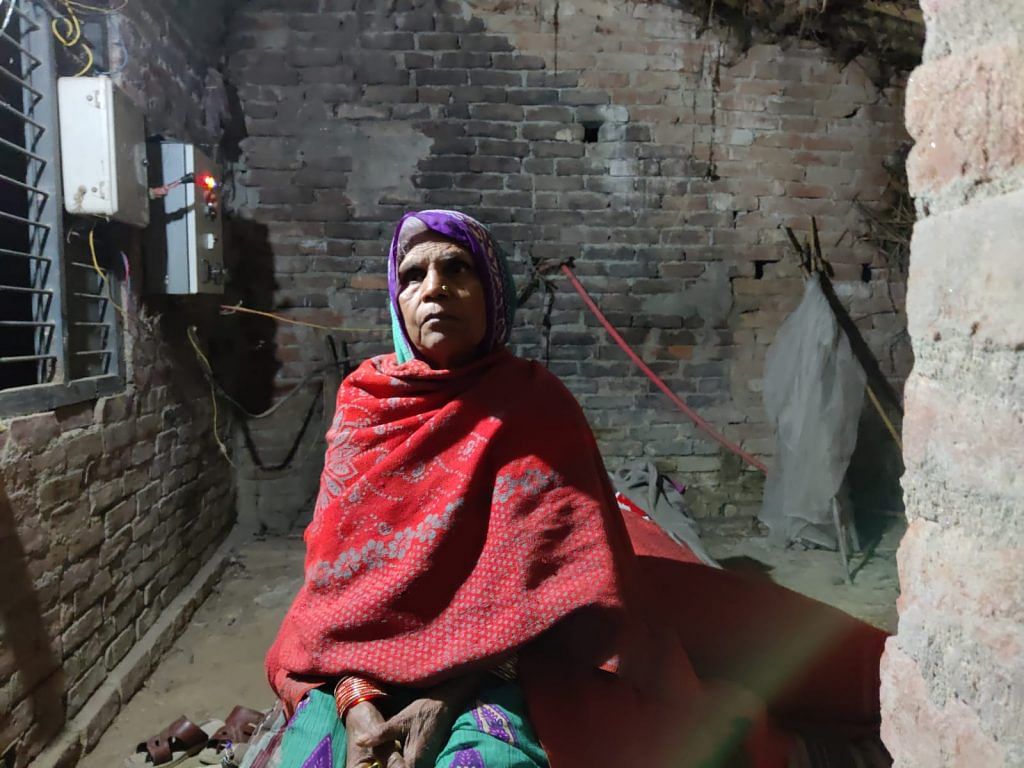
Opposition parties in UP know this is an election issue but have to tread carefully. The Samajwadi Party announced that if it wins, it would provide Rs 5 lakh compensation to the kin of those killed in stray bull attacks. The Congress manifesto promises compensation of Rs 3,000 per acre of farmland damaged by stray cattle. In an attempt to replicate its Chattisgarh model ‘Godhan Nyay Yojana’ under Bhupesh Baghel, the Congress also offered to buy cow dung at Rs 2 per kilo from farmers in UP.
UP BJP spokesperson Rakesh Tripathi contests this. “Cattle menace is not an election issue, it’s just propaganda by opposition parties. Yogi govt has registered 10 lakh beneficiaries who are given Rs 900 per month for each animal. Every issue can’t be solved by the government alone, the people have to play a part. The solution to this problem is not cow slaughter like during Akhilesh Yadav’s tenure. Hindus will not let it happen and won’t vote on the basis of this,” he told ThePrint.
Also read: Video of dead cows at gaushala in Yogi’s UP surfaces, officials dismiss it as ‘very old’
The cows didn’t come home
Several policies of the Yogi Adityanath government has affected the trade in ageing cattle, thereby skewing the economy that was in place for decades. The Uttar Pradesh Prevention of Cow Slaughter Act, 2020 prohibits the transportation of “the cow or its progeny” for slaughter. The punishment? Jail for up to seven years and a fine of Rs 1 lakh to Rs 3 lakh.
This gave rise to cow vigilantes in the state who beat up anyone found to be transporting cattle, in suspicion of cow slaughter and consumption. The number of lynchings and attacks by ‘gau-rakshaks’ kept rising — from Mohammed Akhlaq in Dadri in 2015 to Mohammad Shera in Mathura in 2021. The result is an atmosphere of fear, where cows and bulls run free and hungry and trade has declined.
“I was attacked one night by one of the bulls while trying to keep them away from our crops. Earlier these bulls could have fetched money for poor farmers, now they are just attacking us,” says 68-year-old Suresh as he sits in his khatiya in the middle of his ‘ek bigha zameen‘, protecting the paddy crops he will harvest next month.
Earlier, cows that didn’t give milk and bulls would be either sold in the cattle trade and transported — even to Bangladesh — or sent to slaughterhouses. Now there is an unofficial ban on the trade and most slaughterhouses have been shut down.
Harish Damodaran, journalist and is a senior fellow at Centre for Policy Research, says the government should allow male animals to be slaughtered. “It’s impossible to house bulls, they are far too wild and kill people. The ideal scenario would be to not let them grow into bulls and promote rearing of male calves for slaughter. It would generate jobs in rural areas as well.”
Damodaran also stressed the difference between cross-bred cows and desi cows. The sentiment attached to cows is with the Indian breed, which is called Gaumata.
“Mostly, farmers have cross-bred jersey cows, so there should be nothing ‘holy’ about them. They can and should be allowed to get slaughtered so that there’s a balance between sentiment and practicality. If Yogi, Akhilesh, or whoever comes to power announces this, they will be in power for the next 10 years,” Damodaran says.
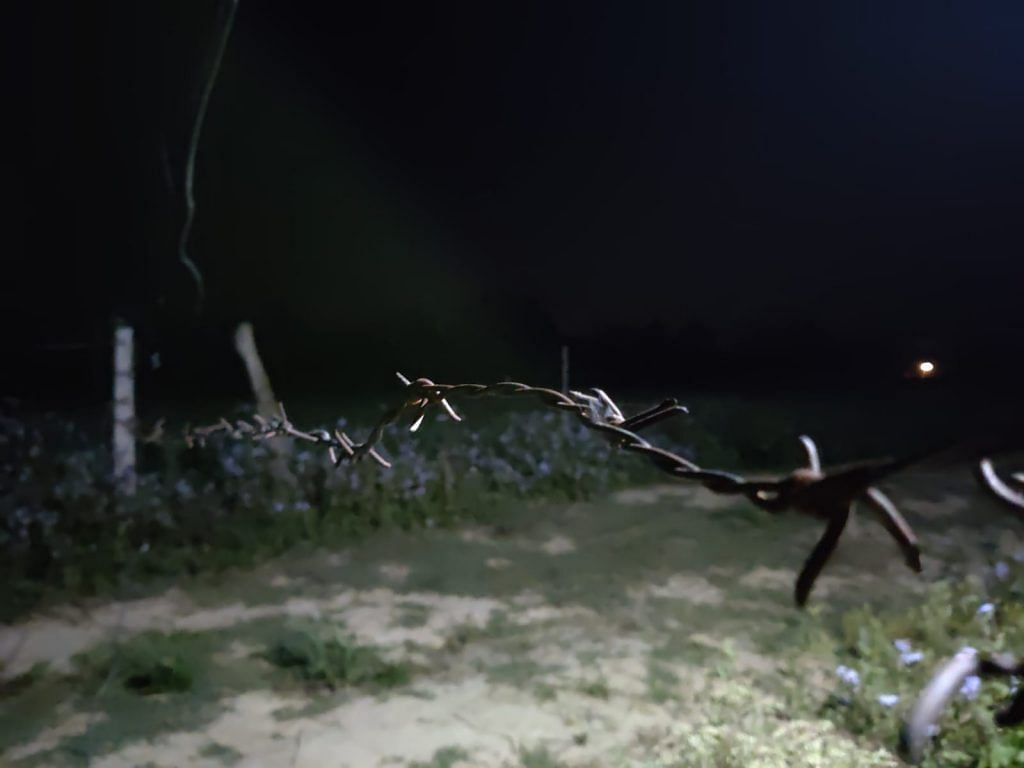
Also read: How 3 UP brothers arrested for ‘cow slaughter’ were slapped with NSA for ‘annoying Hindus’
Hungry cows, hungry farmers
The main sufferers today are the cattle and the farmers.
Suresh Yadav is a resident of UP’s Barabanki and a marginalised farmer. He does not have the money for metal fencing hence has to sit and protect the crops himself. But, he says, even the metal fencing is no deterrent for hungry cattle desperate for fodder.
“Yogi ji brought a scheme of Rs 30 per day for each animal, but that money barely made it to farmers in rural areas who had to leave their cattle on the streets after not being able to take care of them. After Covid, farmers and poor people do not have money to feed themselves, how do you expect us to take care of 100-200 cows and bulls?” Yadav asks. He knows cows are holy, but the way they are being treated isn’t even close to it.
“This government only puts up a drama of protecting cows, in reality, it is the reason cattle are suffering in the state.”
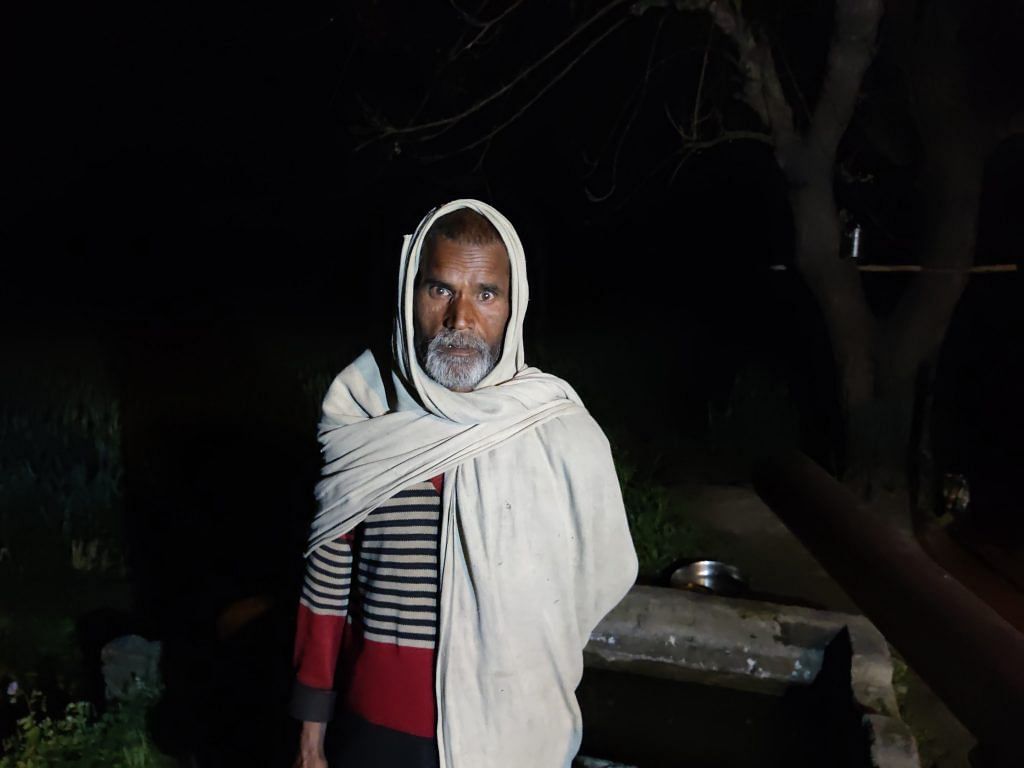
The number of farmers rearing cattle also decreased after trade slowed down. According to a report by Article-14, the 2019 livestock census shows the “number of domesticated cattle declined 2.75 per cent between 2012 and 2019 in UP, even though it increased by 1.3 per cent nationally. In contrast, stray cattle numbers rose 117 per cent in rural UP, from 495,000 in 2012 to 1.07 million in 2019”.
Even the well-off farmers are distressed because wiring and labour to keep the stray cattle away are doubling their cost.
“I had to change my cropping pattern in the last two years because the government is not doing anything for us, so we found a solution and shifted to sugarcane which is easier to protect from cattle,” says 38-year-old Harpreet Singh from Kushal Nagar in Sitapur.
It’s not just Harpreet Singh, many in UP are being forced to change their cropping pattern leading to more fodder shortage.
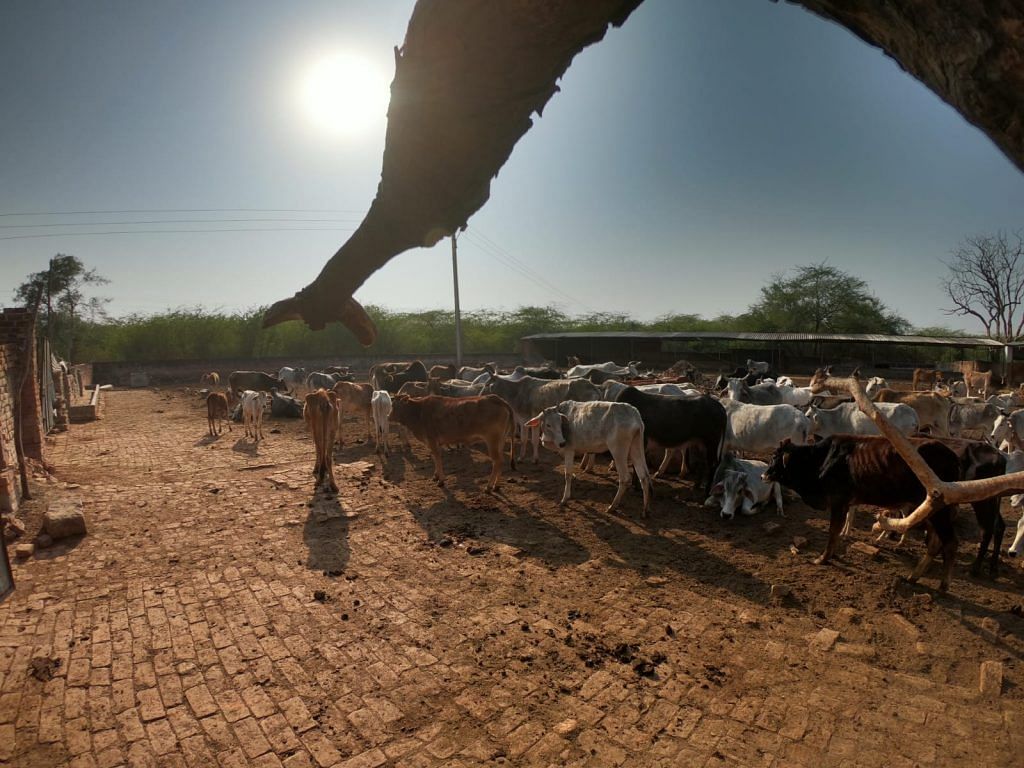
Also read: What do UP voters want? This is what they told me about cow, Covid, Kashi
‘Crores spent on gaushalas’
The Yogi Adityanath government introduced cattle protection centres and increased the number of cow shelters or ‘gaushalas’ to protect cows ever since it came to power in 2017. It has spent around Rs 764 crore from 2017 to 2020 on gaushalas and temporary shelters to accommodate cows, according to the Article-14 report. In the 2021-22 state budget, Rs 390 crore was given to the gaushalas, but caretakers say that money is not reaching the cattle and is eaten up by corrupt middlemen.
Jung Bahadur, 64, has been working as a caretaker in a government-built gaushala in UP’s Khatola since 2018. He says ever since he joined, he has only witnessed cows dying inside the gaushalas due to lack of fodder.
“I have about 250 cows and bulls in our gaushala, many have died in the past few years due to severe shortage of fodder, especially in the last one year because of Covid crunch. An entire year has passed and we have not received a single penny. Fodder is Rs 1,500 per quintal, how is the government expecting us to feed the cattle with Rs 30 per day? The owner of our gaushala is fighting elections this year from the BJP, but she has no time to take care of the cows they call ‘holy’.”
(Edited by Neera Majumdar)


